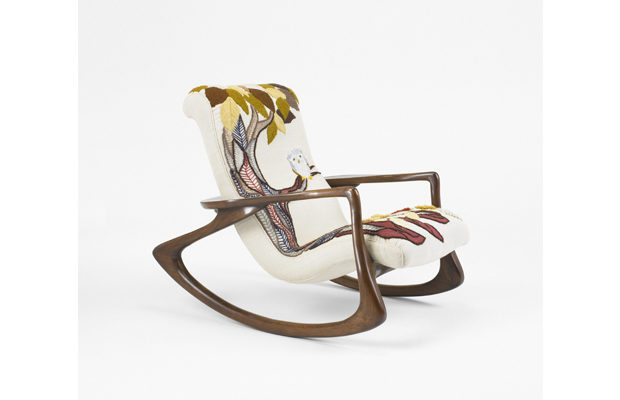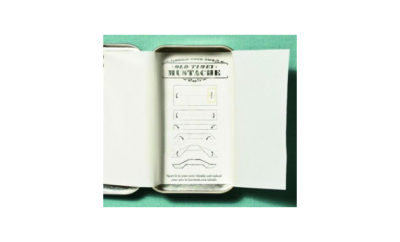
Design
Vlad the Impaler

Vladimir Kagan’s sculpted rocking chair, designed 1953.
Vlad the Impaler
Nowadays, when I look through design magazines, it’s difficult for me to find work that is really new. When new designs are published, it’s usually because they’re different, not necessarily better. The only way a designer can get attention today is by screaming, and so they create something outrageous. Very occasionally I’ll find something that is outrageous but also truly marvelous, and I’ll wish I had thought of it myself. But much of new design is made simply for shock effect.
I do enjoy crossover design that ventures into art. This is where the creative mind still has free range; there are no holds barred. The limited editions by Ron Arad are poetry in stainless steel. Wendell Castle is a master of the art of turning one-off designs into collectible sculpture. I can relate to the sculptural work of Zaha Hadid. It doesn’t make functional sense, but she’s having fun and someone is willing to pay for it. The Furniture Society is a great reservoir of creative craftsmen working in a variety of materials. Garry Knox Bennett’s imaginative works are some of my favorites.
As for designs for industrial manufacture, Konstantin Grcic of Munich is a genius at creating edgy products. He sees his calling through a different lens than I: his goal is industrial minimalism, expressed in a narrow parameter for mass production. Is it comfortable? Mostly not. But comfort has gone out the window in the twenty-first century. People are not interested in comfort, they’re interested in style. The new sexy Italian sofas are undeniably good looking, but the seating is too deep and low for normal mortals to sit in or get up from without serious injuries to their sacroiliac.
In contrast, I am driven by the need for comfort. It is my priority. My mission is to make furniture that people can enjoy visually, but that is also comfortable. That’s reality, and it presents a challenge far more difficult than going off the deep end in design simply by creating eye candy.
I did not make an impact when I first came on the scene in the 1950s. I really did not like what mid-century design stood for. My furniture was the equivalent of Arad’s one-offs of today. The goal in the mid-century—the goal of the Eameses and the George Nelsons—was furniture produced in great numbers for the masses. It was a great innovative movement following the Depression and World War II: a celebration of liberation from doldrums and despair.
But I wanted to create furniture, made in the traditional way, by craftsmen, reflecting a new desire for casual living. My work reflected the spirit and needs of my young avant-garde clientele, who were the patrons of then-little-known abstract expressionist painters: Rothko, Kline, Pollock, and Motherwell. I grew up under the influence of the Bauhaus, Scandinavian design, and the new modern Italian baroque; these were my early inspirations. I looked further back and admired Victorian design (much maligned by devotées of modernism), and at art nouveau and Biedermeier. This mélange of stimulation nurtured my early criteria for design.
My client’s collections were huge and required uncluttered walls, so I created freeform sofas that could live in the middle of a room, liberating the walls for art. I conceived sectional seating that was flexible, and could form an interior landscape. I turned to natural forms, both fauna and flora, to create sculptured furniture that is now considered iconic. Today, I design with the same motivations, but love using new materials and technology to create designs. I have never lost my connection to the past but am always looking to the future.












